![]()
![]()
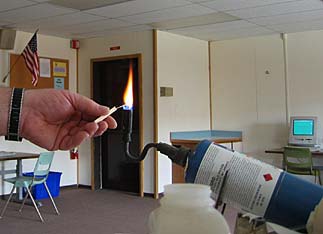 In this experiment small amounts of several compounds, suspended on small loops of wires with insulating wood handles, were held in the flame of a propane burner. Each wire glows white when hot but has been chosen to not contribute significantly to color of the flame. The burning air-propane mixture glows bright blue near the burner, but contributes very little to the higher flame. The flames were photographed with a Canon S30 digital camera for your viewing.
In this experiment small amounts of several compounds, suspended on small loops of wires with insulating wood handles, were held in the flame of a propane burner. Each wire glows white when hot but has been chosen to not contribute significantly to color of the flame. The burning air-propane mixture glows bright blue near the burner, but contributes very little to the higher flame. The flames were photographed with a Canon S30 digital camera for your viewing.
Camera mechanisms are different from the mechanism used by human eyes to detect colors. The colors seen by eyes and cameras are approximately the same. However the eye typically adjusts to bright light by tiring over time resulting in a changing perception of color. Camera film and charge coupled devices used in digital cameras don't tire, but bright light often appears whiter. For example, the light coming directly from the middle of the flame to the right looked to the eye like a brighter yellow than the edge of the flame, not white.
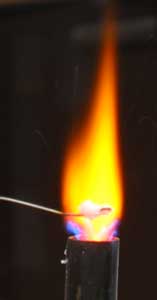 BaCl2 |
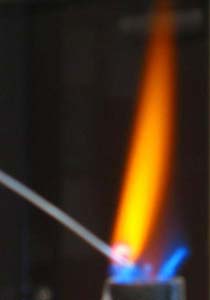 CaCl2 |
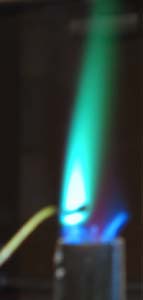 CuCl2 |
 KCl |
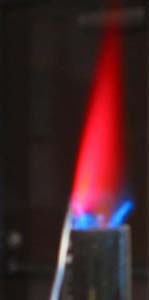 LiCl |
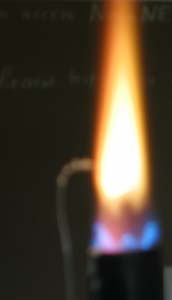 NaCl |
Record your results in your science journal. Write a Formal Report if you need to earn credit.